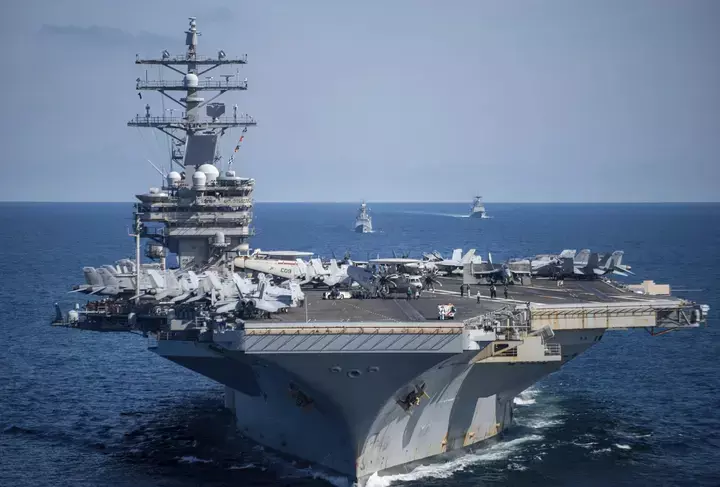Introduction
The U.S. Navy has recently announced the naming of its newest class of ocean surveillance ships, the Explorer class. The first two vessels, USNS Don Walsh (T-AGOS 25) and USNS Victor Vescovo (T-AGOS 26), will lead a planned fleet of seven new surveillance vessels. This fleet is set to significantly enhance the Navy’s maritime capabilities and set new standards in ocean surveillance. Let’s delve into the details of these ships, their technical parameters, and their impact on the maritime industry.
Honoring Ocean Exploration Pioneers
The naming of the ships honors two remarkable pioneers in ocean exploration: Captain Don Walsh and Commander Victor Vescovo. Captain Don Walsh, who passed away in November 2023, made history in 1960 by piloting the bathyscaphe Trieste to Challenger Deep, reaching a depth of 35,797 feet. Commander Victor Vescovo, a retired naval intelligence officer, currently holds the world record for the deepest crewed vessel dive to Challenger Deep and notably completed the Five Deeps challenge.
Technical Parameters and Design
The Explorer-class vessels will feature an innovative steel small waterplane area twin hull (SWATH) design, measuring 356 feet in length with an 8,500-ton displacement. This design provides improved stability and maneuverability in rough seas, making it a more environmentally friendly option for ocean surveillance. The key technical parameters include:
- Length: 356 feet
- Displacement: 8,500 tons
- Design: Steel small waterplane area twin hull (SWATH)
- Class: Explorer-class
- Number of vessels: 7 planned
Contracts and Construction
The U.S. Navy awarded the $178 million contract for the detailed design and construction of the two vessels to Thoma-Sea Marine in December 2020. Austal USA also won a contract potentially worth up to $3.2 billion for the detail design and construction (DD&C) of up to seven of the new T-AGOS(X) ocean surveillance ships, now called T-AGOS-25 ships.
Impact on the Maritime Industry
The introduction of the Explorer-class ocean surveillance ships will significantly enhance the U.S. Navy’s capabilities in maintaining strategic deterrence and operational awareness in the world’s oceans. These ships will play a crucial role in supporting the Navy’s maritime operations, including surveillance, reconnaissance, and intelligence gathering.
The construction of these ships will also create new opportunities for the maritime industry, including job creation and economic growth. The innovative SWATH design will set a new standard for ocean surveillance ships, providing improved stability and maneuverability in rough seas.
Environmental Considerations
The Explorer-class ocean surveillance ships are designed to operate in a way that minimizes their environmental impact. The use of SWATH design will reduce the ship’s wake and noise pollution, making it a more environmentally friendly option for ocean surveillance.
However, the construction and operation of these ships will still have some environmental impact, including the use of fossil fuels and potential disruption to marine ecosystems. The U.S. Navy will need to ensure that the operation of these ships is carried out in a responsible and sustainable manner.
Summary
The U.S. Navy’s new Explorer-class ocean surveillance ships will play a crucial role in maintaining strategic deterrence and operational awareness in the world’s oceans. The naming of the ships after Captain Don Walsh and Commander Victor Vescovo honors their remarkable contributions to ocean exploration. The technical parameters of these ships, including their innovative SWATH design, will set a new standard for ocean surveillance ships. The introduction of these ships will have a significant impact on the maritime industry, including job creation and economic growth.
Conclusion
In conclusion, the Explorer-class ocean surveillance ships represent a significant advancement in the U.S. Navy’s maritime capabilities. While the environmental impact must be carefully managed, the benefits in terms of strategic deterrence, operational awareness, and economic growth are substantial. As the Navy moves forward with the construction and deployment of these vessels, it will be essential to ensure that their operation is conducted in a responsible and sustainable manner, minimizing their environmental impact and maximizing their contribution to maritime safety and security.
For industry professionals and enthusiasts, staying informed about such developments is crucial. Following reliable sources and engaging in industry conversations can provide valuable insights into the future of maritime technology and its impact on global operations.
List of Sources
- SECNAV Del Toro Names T-AGOS Explorer-Class and First Two Ships
- U.S. Navy Names New Explorer-Class Ocean Surveillance Ships After Deep …
- SECNAV Del Toro Unveils T-AGOS Explorer-Class Ships
- Navy TAGOS-25 Ocean Surveillance Shipbuilding Program: Background and …
- Report to Congress on Navy TAGOS-25 Ocean Surveillance Shipbuilding …
- Report to Congress on Navy TAGOS-25 Ocean Surveillance Shipbuilding …
- Ocean Surveillance Ships – T-AGOS – United States Navy
- Construction Begins on NOAA’s New Oceanographic Research Ships
- Austal Wins Up To $3.2 Billion For T-AGOS-25 Ocean Surveillance Ships
- Navy names new ship after explorer, Lyme resident Ballard


Leave a Reply